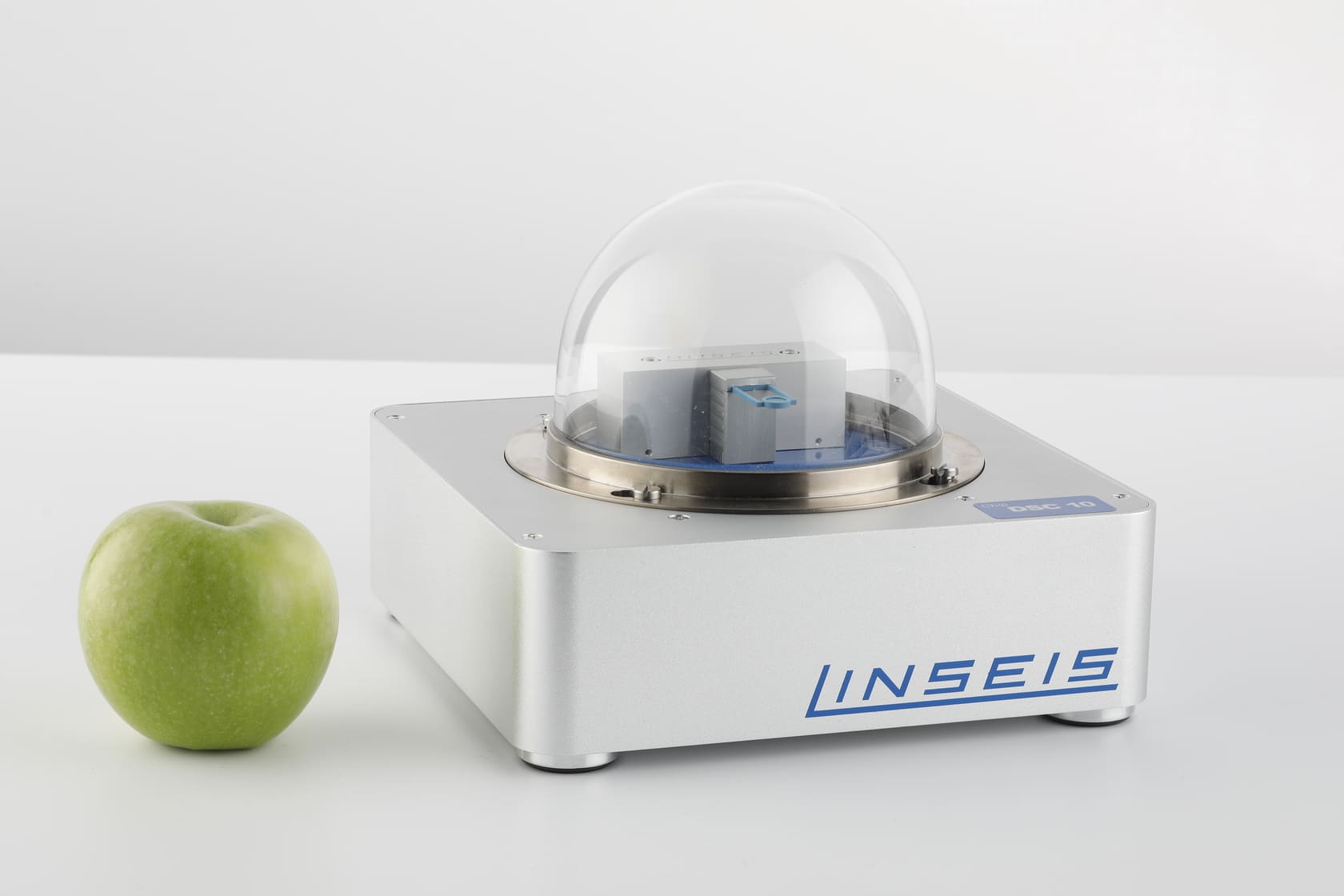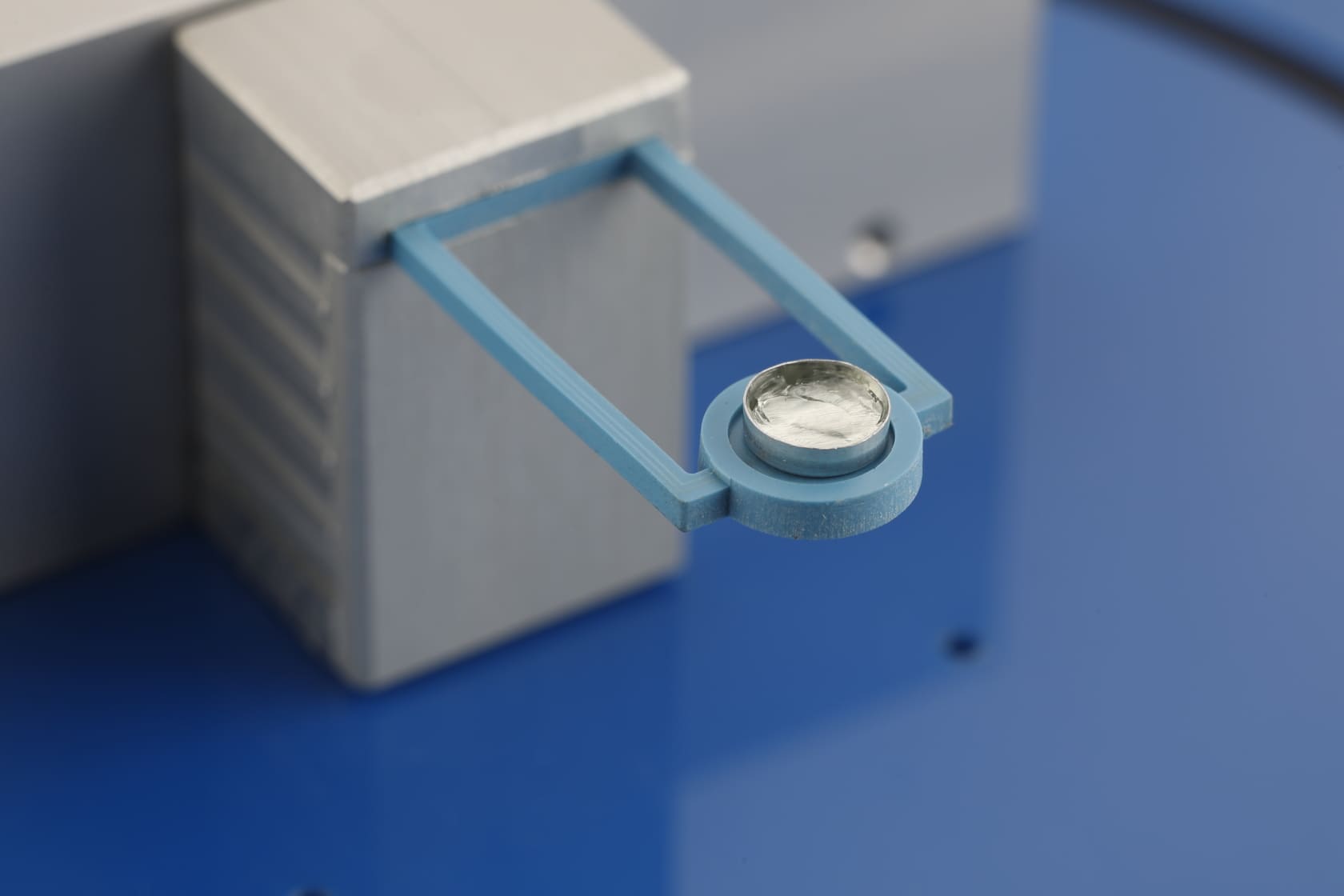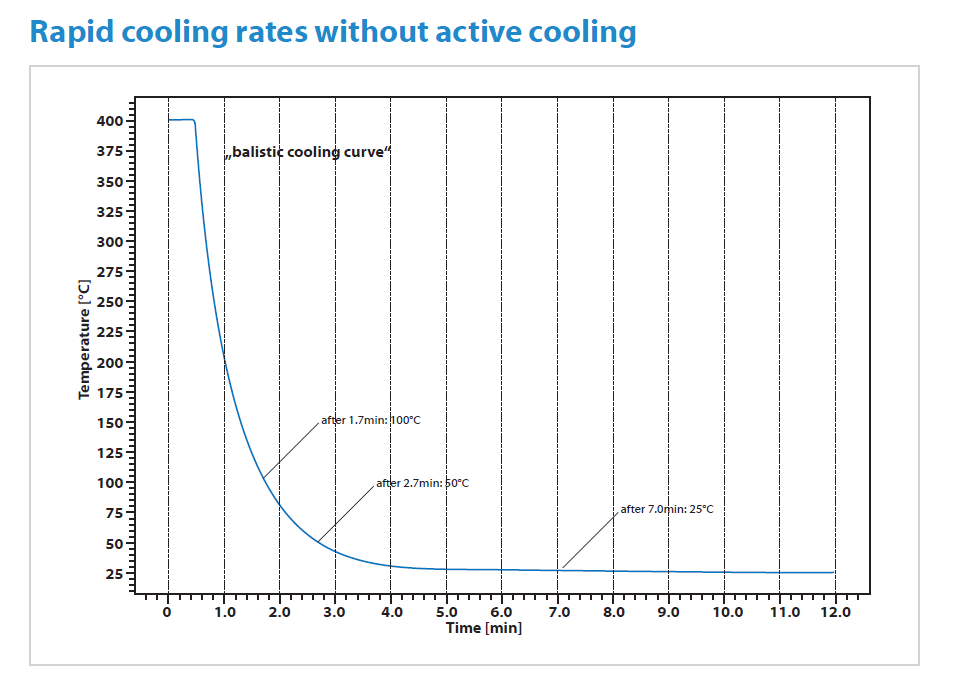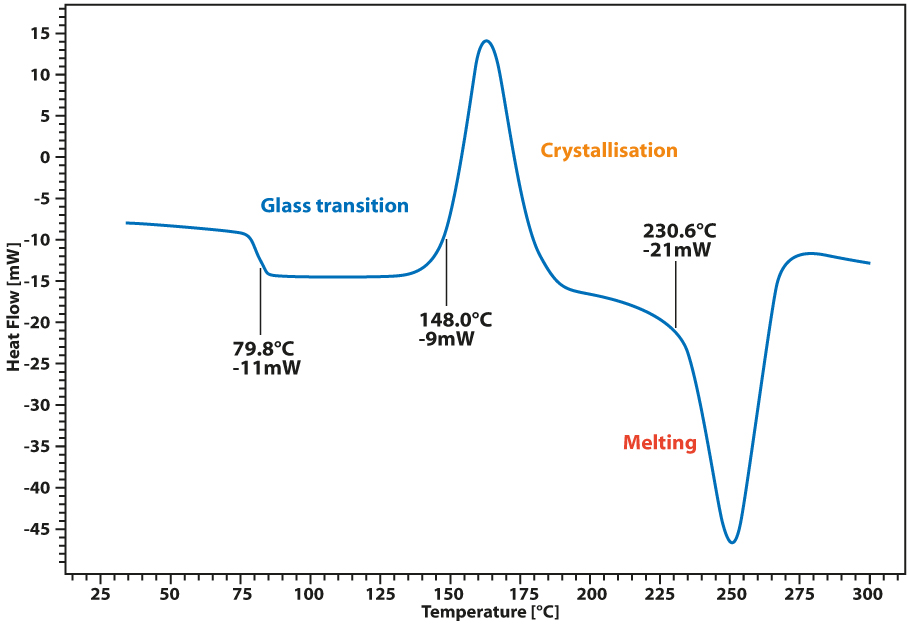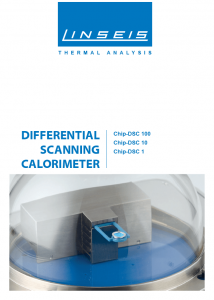Chip-DSC 1
Patented, revolutionary Sensor Concept
Description
On point
The all new Chip-DSC 1 integrates all essential parts of DSC: furnace, sensor and electronics in a miniaturized housing. The chip-arrangement comprises the heater and temperature sensor in a chemically inert ceramic arrangement with metallic heater and temperature sensor.
This arrangement allows superior reproducibility and due to the low mass outstanding temperature control and heating rates of up to 100 K/min. The integrated sensor is easily user exchangeable and available for a low cost.
The integrated design of the chip-sensor delivers superior raw data, which enables a direct analysis without pre- or post-processing of heat flow data.
The compact construction, leads to a significant reduction in production cost which can be passed on to our customers. The low energy consumption and unrivaled dynamic response result in unsurpassed performance of this revolutionary DSC-concept.
New Chip-Sensor Technology
Worlds only commercial Heat Flux DSC with integrated heater and temperature sensor. Unmated sensitivity, time constant and heating / cooling rates.
Highest sensitivity – for detection of melts and weak transitions
The innovative low mass Chip-DSC sensor design enables us to offer a Heat Flux DSC Sensor with unmatched response rate.
Benchmark resolution – precise separation of close lying events
The unique sensor design permits benchmark resolution and perfect separation of overlapping effects.
Unmatched cooling speed – low mass Chip Sensor
Due to the low mass of our sensor we can achieve unmatched cooling speeds, enabling exiting new applications and a higher sample throughput.
You are interested in a Chip-DSC 1?
You need more information?
Contact our application experts!
Specifications
| Model | Chip-DSC 1* |
|---|---|
| Temperature range: | RT up to 450 °C (no cooling option available) |
| Price range: | $ |
| Heating and cooling rates: | 0,001 up to 100 K/min |
| Temperature accuracy: | +/- 0,2K |
| Temperature precision: | +/- 0,02K |
| Digital resolution: | 16.8 million points |
| Resolution: | 0,03 µW |
| Atmospheres: | inert, oxidizing (static, dynamic) |
| Measuring range: | +/-2,5 up to +/-1000 mW |
| Calibration materials: | included |
| Calibration: | Recommended 6 month interval |
*Specs depend on configurations
Software
The all new Platinum Software greatly enhances your workflow as the intuitive data handling only requires minimum parameter input.
AutoEval offers a valuable guidance for the user when evaluating standard processes such as glass transitions or melting points. Thermal library product identification tool, provides a database with 600 polymers permitting an automatic identification tool for your tested polymer. Instrument control and/or surveillance through mobile devices gives you control wherever you are.
- Software packages are compatible with latest Windows operating system
- Set up menu entries
- All specific measuring parameters (User, Lab, Sample, Company, etc.)
- Optional password and user levels
- Undo and Redo function for all steps
- Infinite heating, cooling or dwell time segments
- Multiple language versions such as English, Germany, French, Spanish, Chinese, Japanese, Russian, etc. (user selectable)
- Evaluation software features a number of functions enabling a complete evaluation of all types of data
- Multiple smoothing models
- Complete evaluation history (all steps can be undone)
- Evaluation and data acquisition can be performed simultaneously
- Data can be corrected using zero and calibration correction
- Data evaluation includes: Peak separation software Signal correction and smoothing, first and second derivative, curve arithmetic, data peak evaluation, glass point evaluation, slope correction. Zoom / individual segment display, multiple curve overlay, annotation and drawing tools, copy to clip board function, multiple export features for graphic and data export, reference based correction
Applications
Application: Rapid cooling rates without active cooling
The Linseis Chip-DSC allows fastest possible ballistic cooling rates without any active cooler needed. Due to the low thermal mass and innovative sensor design, cooling rates up to 200°C/min from maximum temperature to 100°C and up to 50°C/min from 100°C to room temperature are possible. Starting ballistic cooling from a 400°C isothermal segment, 50°C is reached under 3 min measurement time. Of course, the signal can still be evaluated during that cooling segment and does not lose sensitivity or accuracy.
Application: Measurement of PET granulate
The analysis of polymers is one of the main applications of DSC. Effects like glass transitions, melting and crystallization points are of interest and often very hard to detect. The new Linseis Chip-DSC provides high resolution and sensitivity, making it an ideal instrument for this kind of analysis. As an example, a PET granulate was heated, quench cooled to freeze the amorphous state and afterwards measured by Chip-DSC with a linear heating rate of 50°C/min. The curve shows a significant glass transition around 80°C, followed by a cold crystallization of the amorphous parts starting at 148°C and a melting peak at 230,6°C.

